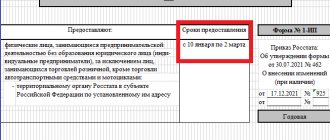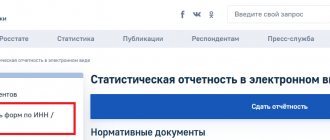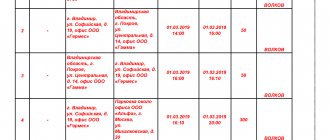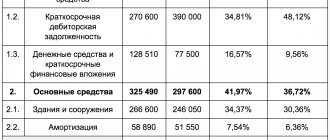Kontur.Accounting is a web service for small businesses!
Quick establishment of primary accounts, automatic tax calculation, online reporting, electronic document management, free updates and technical support.
Try it
Tax for UTII can be calculated based on imputed income, and not on actually received income. In this article we will tell you what basic UTII profitability means and how to calculate it.
From the beginning of 2022, UTII will be abolished; the last time it will need to be calculated is based on the results of 2022. Find a new profitable tax system using our free calculator. We held a webinar about the transition from UTII and collected the most popular questions in the article. If you haven’t found the answer to your question, ask it in the comments, we will definitely answer.
Basic profitability and physical indicator of UTII
The basic profitability of a business on UTII does not depend on real earnings. The profitability of UTII for all types of economic activity is determined by officials, per unit of physical indicator.
The physical indicator of UTII is the units involved in generating income from an activity - they are established for each type of activity. For example, each employee of a hairdressing salon, a square meter of retail space in a store, one passenger seat on a bus and other indicators.
The basic income per unit of physical indicator in 2022 is established in the Tax Code of the Russian Federation, Art. 346.29, which lists all types of basic income by type of activity.
General rules for calculating UTII
UTII is a special regime within which certain types of activities are taxed, for example, retail trade, the operation of restaurants, cafes, bars, baths, cargo transportation, and transport services. The peculiarity of imputation is that the amount of tax payable is calculated not from real income, but from estimated income.
The advantage of the tax is that the estimated income depends on a number of physical indicators (number of employees, area of a store or cafe, number of cars) and deflator coefficients (they are designed to regulate tax revenues to the budget depending on inflation and the territory of operation). That is, the calculation of imputed income and the tax paid on it is closely related to the actual conditions of the company’s activities.
As a general rule, the tax rate for UTII is 15%. However, it is also possible to use reduced rates.
You can read more about this in the article “There will be more preferential rates for special regimes .
Physical indicators for calculating UTII are established depending on the type of activity. The rules for calculating individual physical indicators are discussed in this publication .
The publication “How to calculate UTII if the physical indicator has changed” will tell you about the features of calculating UTII when a physical indicator changes.
UTII can also be combined with other tax regimes, for example, OSN or simplified tax system. In order to correctly calculate in this case the physical indicators of UTII 2017-2018 and the amount of imputed tax payable, you need to organize separate accounting.
How to do this, read the material “How to organize separate accounting for UTII” .
With separate accounting of income, there is no difficulty, but what about expenses, for example, for accountants who are involved in activities under all tax regimes?
The following publications will help you understand this issue:
- “We divide the costs between special regimes”;
- “Procedure for maintaining separate accounting of income and expenses”;
- “Distribution of expenses when combining UTII and simplified tax system.”
The “imputed person” can reduce the amount of tax payable by the amount of insurance premiums transferred for employees. Individual entrepreneurs, both with and without employees, can credit contributions “for themselves” to the UTII account, including those paid on income over 300,000 rubles. in a year.
Let us note that previously the Ministry of Finance spoke out against the inclusion of 1% of “excess income” in deductions for UTII and the simplified tax system. However, in December 2015 he changed his position.
Here we have prepared explanations and links to regulations confirming the legality of reducing UTII by the entire amount of fixed contributions.
If you have any disputes with tax inspectors, you can refer to the official position of the Ministry of Finance.
Unfortunately, a fixed payment cannot be taken into account in parts in different quarters or transferred to the next year. The Ministry of Finance talks about this.
In this material we have prepared a brief overview of the ministry’s letter.
For information on how to correctly take into account a fixed payment, read the article “A one-time payment of a fixed payment may be unprofitable for UTII .
How to reduce UTII for insurance premiums if you have several retail outlets, see this material.
IMPORTANT! In all publications, we provide links to legislative acts, letters from officials and court decisions, so that in the event of a dispute with inspectors, you can argue your position.
Are you switching from UTII? Connect Kontur.Accounting
45% discount in November: RUR 7,590 instead of 13,800 rub. per year of work
Easy bookkeeping
The system itself will calculate taxes and remind you of the deadlines for payments and submission of reports.
Automatic calculation of salaries, vacation pay and sick leave
Technical support 24/7, tips inside the service, reference and legal database
Sending reports via the Internet
Reports and KUDiR are generated automatically based on accounting data
Electronic document management and quick verification of counterparties
Documents, transactions, analytical reports, VAT reconciliation
Results
When applying UTII in retail trade, one of the physical indicators in relation to which the basic profitability of the type of activity being carried out is determined is the area of the premises or place in which trade is carried out. It is important for sales conducted through a stationary retail network (with or without sales floors) or in the absence of a stationary network (at retail locations).
The area limits for the use of UTII with the indicator of the size of the sales floor or place are limited by the following figures:
- 150 sq. m for a sales area - exceeding it leads to the impossibility of applying UTII;
- 5 sq. m for retail spaces - the presence of a smaller area requires the use of a different physical indicator.
The size of the area is determined according to documents. However, in a number of cases, certain nuances of classifying premises as retail should be taken into account.
Sources: Tax Code of the Russian Federation
You can find more complete information on the topic in ConsultantPlus. Free trial access to the system for 2 days.
How to calculate the Single tax on imputed income in 2020
To calculate UTII tax, you need to use a special formula:
UTII = BD × FP × K1 × K2 × 15%
UTII - the amount of tax in rubles per month; BD - basic profitability for a specific activity; FP - physical indicator (number of employees, building area, etc.); K1 - deflator coefficient, established by the Government of the Russian Federation; K2 - correction factor, established by local authorities for each type of service; 15% - tax rate (may be reduced by decision of local officials).
In 2022, the K1 coefficient is 2.005; in 2019 it was 1.915. This means that the tax burden on entrepreneurs on UTII will increase. The K2 coefficient in 2022 can be from 0.005 to 1, it is set by the regions, find out the value from your tax office.
Important! For reporting, the amount of tax calculated using the formula must be multiplied by 3 months, since individual entrepreneurs provide reports on UTII every quarter.
Calculation of UTII tax
UTII is calculated for each quarter separately for each type of activity that is subject to this tax. And also for each place where this activity is carried out.
Formula for calculating UTII:
Tax rate
Installed by local authorities. Depends on the type of business activity and the category of taxpayer. Varies from 7.5% to 15%. If local regulations do not provide for a reduced tax rate, a general rate of 15% applies. We will discuss cases when and how you can lower your tax rate below.
Calculation of the tax base (imputed income)
- For imputed income you need to know:
- physical indicator (clause 3 of Article 346.29 of the Tax Code);
- monthly basic profitability of a physical indicator (clause 3 of Article 346.29 of the Tax Code);
- the value of the deflator coefficient K1 (clause 4 of Article 346.29 of the Tax Code);
- the value of the correction factor K2 (clause 4 of Article 346.29 of the Tax Code).
Formula for calculating the tax base (imputed income):
Basic yield
Basic return is a conditional monthly income derived from a physical indicator for a specific type of activity. It is established by law, specific for each type of activity and measured in rubles. The amount of basic profitability is indicated in the third column of the table, clause 3 of Art. 346.29 Tax Code, separately for each type of activity.
When calculating UTII, it is applied as is, i.e., as prescribed in the Tax Code.
Physical indicator
Each type of business activity has its own physical indicator: the number of employees, the area of the sales floor, the number of retail places, etc. A complete list of the values of physical indicators for different types of activity is presented in paragraph 3 of Article 346.29 of the Tax Code in the second column. When calculating UTII, physical indicators must be indicated in whole units (clause 11 of article 346.29 of the Tax Code). When rounding the size of a physical indicator, values less than 0.5 are discarded, and 0.5 or more are rounded to one (letter of the Ministry of Finance dated June 16, 2009 No. 03-11-11/111).
Correction factors K1 and K2
The tax base for UTII is adjusted by two coefficients (Article 346.27 of the Tax Code of the Russian Federation): a deflator coefficient (K1) and a correction coefficient (K2).
Deflator coefficient (K1)
The K1 coefficient takes into account the impact of inflation and is established annually at the state level by the Ministry of Economic Development of the Russian Federation. The order to establish deflator coefficients is published for the next calendar year no later than November 20. Its meaning is the same for all regions and for all types of activities. In 2022, the deflator coefficient K1 is 1.868.
When calculating, coefficient K1 is applied as is, without rounding.
| Period | K1 value | Basis (details of orders of the Ministry of Economic Development of the Russian Federation) |
| 2018 | 1,868 | dated October 30, 2017 No. 579 |
| 2017 | 1,798 | dated 03.11.2016 No. 698 |
| 2016 | 1,798 | dated 11/18/2015 No. 854 |
| 2015 | 1,798 | dated October 29, 2014 No. 685 |
| 2014 | 1,672 | dated 07.11.2013 No. 652 |
| 2013 | 1,569 | dated October 31, 2012 No. 707 |
Basic yield for UTII 2022
| Activity | Physical indicator | Basic yield in rubles |
| Domestic services | Number of employees together with individual entrepreneur | 7 500 |
| Veterinary services | Number of employees together with individual entrepreneur | 7 500 |
| Car maintenance, repair and washing | Number of employees together with individual entrepreneur | 12 000 |
| Renting out parking spaces for motor vehicles, as well as storing them in paid parking lots | Total parking area | 50 |
| Cargo transportation | Number of vehicles | 6 000 |
| Transportation of passengers | Number of passenger seats | 1 500 |
| Retail trade through retail chains with sales floors | Sales area | 1 800 |
| Retail trade through retail chains without trading floors and through non-stationary retail chains, with a retail area of up to 5 m2 | Number of retail places | 9 000 |
| Retail trade through retail chains without trading floors, and through non-stationary retail chains, with a retail area of over 5 m2 | Retail space area | 1 800 |
| Delivery retail trade | Number of employees together with individual entrepreneur | 4 500 |
| Selling goods using vending machines | Number of vending machines | 4 500 |
| Services of catering facilities with a service hall | Service hall area | 1 000 |
| Services of catering facilities without a service hall | Number of employees together with individual entrepreneur | 4 500 |
| Outdoor advertising placement | Image area | 3 000 |
| Placement of outdoor advertising on devices with automatic image changing | Surface area | 4 000 |
| Placement of outdoor advertising using electronic signs | Surface area | 5 000 |
| Advertising in and on transport | Number of vehicles | 10 000 |
| Temporary residence and accommodation services | Area for temporary residence | 1 000 |
| Leasing of retail spaces located in facilities of a stationary retail chain without trading floors and in facilities of a non-stationary retail chain, as well as catering establishments without a service hall, if the area of each does not exceed 5 m2 | Number of objects transferred for temporary use | 6 000 |
| Leasing of retail spaces located in facilities of a stationary retail chain without trading floors and in facilities of a non-stationary retail chain, as well as catering establishments without a service hall, if the area of each exceeds 5 m2 | Area of the object transferred for temporary use | 1 200 |
| Leasing of land with an area of no more than 10 m2 for the placement of stationary and non-stationary retail chain facilities, as well as catering | Number of plots for rent | 10 000 |
| Leasing of land with an area of more than 10 m2 for the placement of stationary and non-stationary retail chain facilities, as well as catering | Area of the transferred land plot | 1 000 |
On the procedure for distributing the number of AUP employees
... when carrying out several “imputed” types of activities
The procedure for distributing the number of employees of the AUP when carrying out several types of entrepreneurial activities within the framework of the taxation system in the form of UTII, one of which uses the physical indicator “number of employees, including individual entrepreneurs,” is not contained in the Tax Code of the Russian Federation.
According to the official position expressed in Letter of the Ministry of Finance of Russia dated October 25, 2013 No. 03-11-06/3/45218 , when carrying out “imputed” activities using this physical indicator and types of business activities subject to UTII, using other physical indicators, the total number The AUP is distributed based on the average number of AUP per employee directly engaged in business activities (including individual entrepreneurs) and the average number of employees engaged in activities for which the physical indicator of basic profitability “number of employees, including individual entrepreneurs” is used when calculating UTII. .
To distribute the total number of AUPs in proportion to the average number of other employees, officials propose using the following formula:
Kro1 = ((Kaup / Kro) x Kr1) + Kr1 , where:
Kro1 – the total number of employees, taking into account the distributed AUP by type of activity, for which the physical indicator is “the number of employees, including individual entrepreneurs”;
Kaup – total number of AUP;
Kro – the total number of employees for all types of activities, including individual entrepreneurs and not taking into account the AUP;
Kr1 – number of employees (including individual entrepreneurs and not taking into account AUP) by type of activity, for which the physical indicator is “the number of employees, including individual entrepreneurs”.
In numbers it will look like this.
Example 1
LLC "Shesterenka" applies the taxation system in the form of UTII in relation to two types of business activities:
- provision of repair, maintenance and washing services for motor vehicles;
- retail trade carried out through stores with a sales floor area of no more than 150 sq. m for each trade organization object.
The UTII base for the first type of activity is determined based on the number of employees, for the second - based on the area of the sales floor.
What is the procedure for calculating the physical indicator “number of employees, including individual entrepreneurs” for the purposes of calculating UTII if the LLC employs 11 people: a director, an accountant, 4 car mechanics, 2 electricians and 3 salesmen?
According to the explanations of the Ministry of Finance, this physical indicator is defined as the ratio of the number of AUP to the number of employees excluding AUP, multiplied by the number of employees providing repair, maintenance and washing services for motor vehicles. The result obtained is summed up with the number of workers employed in the named type of activity.
Let's calculate the share of AUP attributable to the type of activity “services for repair, maintenance and washing of motor vehicles.” To do this, we divide the number of employees of the AUP (2 people) by the number of all employees of the LLC for all types of activities, excluding the AUP (9 people) and multiply by the number of employees, not taking into account the AUP, providing services to the population (6 people):
(2 people / 9 people) x 6 people = 1.3 units
We add the calculated share of AUP employees to the number of employees providing services:
1.3 + 6 people = 7.3 units
Accordingly, the value of the physical indicator “number of employees, including individual entrepreneurs” is equal to 7 units (remember, the values of physical indicators are indicated in whole units [2] ( clause 11 of Article 346.29 of the Tax Code of the Russian Federation )).
A similar point of view regarding the methodology for calculating the physical indicator is also expressed in letters from the Ministry of Finance of Russia dated November 23, 2012 No. 03-11-06/3/80 , dated October 25, 2011 No. 03-11-11/265 .
...when combining modes
The procedure for distributing the number of AUP employees when carrying out several types of business activities, one of which applies a taxation system in the form of UTII with the physical indicator “number of employees, including individual entrepreneurs,” is also not defined by the Tax Code.
According to the official position, “imputers” conducting business activities in the provision of services for the repair, maintenance and washing of motor vehicles, when carrying out business activities taxed under a different taxation regime, are required to take into account the total number of employees engaged in the provision of services in order to calculate the amount of the single tax. of these services, including the number of AUP employees ( letters of the Ministry of Finance of Russia dated November 23, 2012 No. 03-11-06/3/80 , dated July 26, 2012 No. 03-11-06/3/55 , dated August 28, 2012 No. 03-11- 06/3/63 , dated 07.10.2010 No. 03-11-06/3/139 ).
Example 2
Let's use the conditions of example 1. Let us clarify that in relation to the second type of business activity, LLC applies OSNO.
How will the physical indicator “number of employees, including individual entrepreneurs” be calculated for the purposes of calculating UTII if 6 people are employed in the “imputed” activity, and the AUP is 2 people?
In this case, the physical indicator is 8 people. (2 people + 6 people).
Changes to UTII
The basic UTII tax yield for 2022 has remained unchanged, but this does not mean that the amount of tax that will need to be paid this year will be the same as in 2022. This is due to the fact that the formula for calculating the imputed tax contains coefficients K1 and K2, which may change. K1 is set by the Government, and K2 by local authorities. Also, regional authorities determine the tax rate, it can be from 15% to 7.5%.
These authorities include:
- municipal districts are a representative body;
- city districts - a representative body;
- legislative bodies - authorities of federal cities.
The area of the trading floor under UTII: what is the limit for this special regime
There is no direct formulation of what a trading floor is in the Tax Code of the Russian Federation.
However, judging by sub. 2 p. 3 art. 346.2 of the Tax Code of the Russian Federation, then trading floors are part of stationary trade. They are separate and specially equipped premises in which retail trade and customer service are carried out. In other words, if part of the area in a retail space is allocated for customer service, it is considered that there is a sales area.
Paragraph 14th century 346.27 of the Tax Code of the Russian Federation refers to the objects of a stationary network in which there are trading floors, only shops and pavilions.
The store according to paragraph. 26 Art. 346.27 of the Tax Code of the Russian Federation is considered an equipped building or part of it if it:
- serves for the sale of goods and provision of services;
- equipped with premises intended for trade, storage of goods, their preparation for sale, accommodation of administrative personnel and auxiliary needs.
Pavilion according to paragraph. 27 Art. 346.27 of the Tax Code of the Russian Federation is considered a building that has a sales area and is designed for a small number of jobs (one or several).
When conducting retail trade in a store or pavilion, the taxpayer must keep in mind that the UTII regime will be available to him only until the area of the sales floor exceeds 150 square meters. m. This indicator according to subclause. 6 paragraph 2 art. 346.26 of the Tax Code of the Russian Federation is the limit for this type of activity and such premises.
For more information about the rules for calculating the area of a sales area, read the material “How to calculate the area of a sales area for the purposes of applying UTII?” .
The size of the sales area directly affects the amount of tax.
See this article for the formula for calculating it.
Quite often situations arise in which taxpayers find it difficult to correctly determine the area of the sales floor. But it directly affects the amount of tax payable. You will find explanations for most controversial cases encountered in practice, supported by links to the opinions of officials and judges, in the Guide from ConsultantPlus, gaining free access to this authoritative legal system.
Reducing contributions for UTII
If an individual entrepreneur does not have employees, he reduces the tax on insurance premiums paid “for himself”. An individual entrepreneur who has hired workers can reduce the tax by the amount of contributions paid (for himself + for employees) to the funds in the amount of 50% of the calculated UTII.
Author of the article: Alexandra Averyanova
Pay UTII and report taxes from the cloud service for small businesses Kontur.Accounting. We have simple accounting, payroll, taxes, reporting, expert help, reminders and automatic updates. Use the service for free for the first 14 days.
Calculation formula and payment of UTII
The single tax is calculated based on the results of the tax period using the following formula:
UTII = (Tax base * Tax rate) – Insurance Contributions.
The UTII rate is the same for all types of activities and all territories – 15%.
UTII taxpayers have the right to reduce the amount of tax calculated for the tax period by the amounts of payments (contributions) and benefits that were paid in favor of employees employed in those areas of the taxpayer’s activity for which a single tax is paid (Article 346.32 of the Tax Code of the Russian Federation).
If there are employees, it is possible to reduce the UTII tax on insurance premiums paid, but not more than 50 percent of the calculated tax amount.
Individual entrepreneurs working without employees (do not make payments or other remuneration to individuals) can reduce the amount of the single tax by the entire amount of fixed insurance contributions paid to the Pension Fund and Compulsory Medical Insurance in the reporting period (without applying the 50% limit). The resulting tax amount payable in this case cannot be less than 0.
The tax period for UTII is a quarter (Article 346.30 of the Tax Code of the Russian Federation).
This means that it is necessary to calculate and pay tax to the budget at the place of registration with the tax authority as a UTII taxpayer at the end of each quarter no later than the 25th day of the first month of the next tax period.
In the payment order for the transfer of tax, you must indicate the budget classification code (BCC).
Correction factors K1 and K2
In addition to the basic profitability and physical indicator, two adjustment factors are used in the UTII calculation formula.
K1 is a deflator coefficient, which is set by the government of the Russian Federation for one year.
Let us remember that in 2016 and 2022 K1 did not increase and remained at the 2015 level - 1.798.
In 2022, K1 for calculating UTII was increased for the first time after maintaining the three-year indicator and amounted to 1.868.
In 2022, K1 was 1.915.
In 2022, K1 is 2.009.
K2 is a coefficient that is set by local authorities for one year for all types of services.
The K2 value can be found on the Federal Tax Service website or at your tax office.








